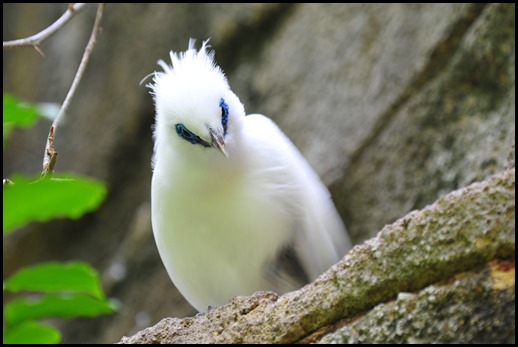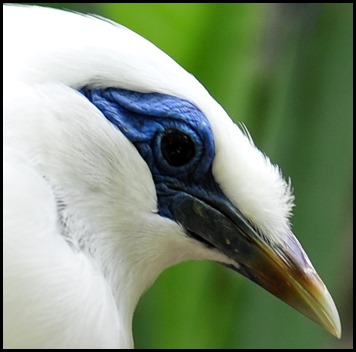Bali Starling

|
The Bali
Starling
 We met this beautiful chap in a big aviary at the Bali Bird Park. He
spent all his time sitting next to cage holding young birds about to be
introduced to the flight. One particular young lady had clearly got him all
unnecessary, bred here at the Park to help this species that really hangs in the
balance.
 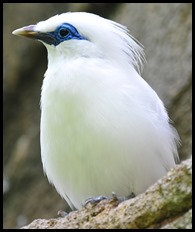 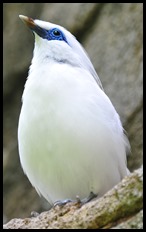 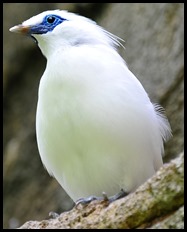 Birdlife.org says:
Justification: This stunning starling qualifies as Critically
Endangered because it has an extremely small range and a tiny population which
is still suffering from illegal poaching for the cagebird trade. Releases of
captive-bred birds have boosted the population, but it is uncertain how many of
these have yet bred successfully in the wild. In due course, if the population
continues to grow and trapping pressures can be brought under control, the
species may warrant downlisting.
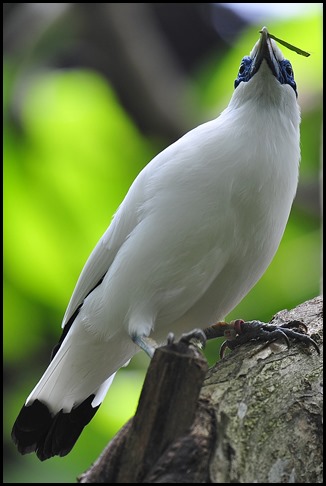
Taxonomic source(s): Sibley, C. G.; Monroe, B. L. 1990. Distribution and taxonomy of birds of the world. Yale University Press, New Haven, USA. Identification: 25 cm. Medium-large, stocky starling. Almost wholly white with long, drooping crest, black wing-tips and tail tip. Blue bare skin around eye and legs, yellow bill. Similar spp. Black-winged Starling Sturnus melanopterus has shorter crest, much larger area of black on wings and tail and yellow eye-ring and legs. Voice: Variety of sharp chattering calls and an emphatic twat.
Distribution and population: This species is endemic to the island of Bali, Indonesia, where it formerly ranged across the north-west third of the island. It has perhaps long been uncommon (numbers in the early 1900's, the period of discovery, have been retrospectively guessed at 300-900, although this is thought to be a gross underestimate), but has declined drastically in population and range. Illegal poaching reduced numbers to a critically low level in 1990, when the wild population was estimated at c. 15 birds. Conservation intervention coupled with the release of a few captive-bred birds raised this to between 35 and 55. However, despite excellent breeding success and continuing conservation efforts, the population continues to fluctuate and fell to six birds in 2001 (P. Benstead verbally 2003). Continuing releases have raised numbers in West Bali National Park, such that surveys in March 2005 found 24 individuals (P. Wood in litt.2005) and in 2008 the population here was believed to be around 50 birds (G. Dijkman in litt. 2007, 2008). However, it is uncertain how many of these released birds have bred successfully in the wild and therefore can be regarded as "mature individuals" following IUCN guidelines. A population has been introduced on Nusa Penida Island (apparently not part of the native range) derived from captive individuals. The population appears to have adapted to the island and is breeding, with a total of 65 adults and 62 young present in 2009 (G. Dijkman in litt. 2007, 2008). Around 1,000 individuals are believed to survive in captivity. There was an apparent sighting of a pair of birds in East Java, but this has not been confirmed and is likely to be escaped or released captive birds (A. Blakemore in litt. 2011).
Population Justification: There
were an estimated c. 50 individuals in the West Bali National Park in 2008
(Dijkman in litt. 2008). On Nusa Penida, the population
was recorded as 65 adults and 62 juveniles in 2009 (C. Kenwrick in
litt. 2009). However, given
that the population estimate should only comprise of mature individuals, and the
IUCN stipulates re-introduced individuals must have produced viable offspring
before they are counted as mature individuals, the current population of 115
individuals should be considered a maximum, and as such the population is
precautionarily assumed to be fewer than 50 individuals and mature
individuals.
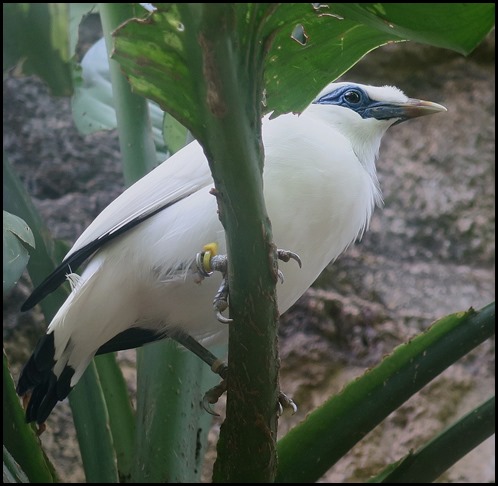
What an incredible, sad story.
We can only hope this gorgeous bird is here for our grandchildren and their grandchildren.
We wish them so much luck.
ALL IN ALL YET ANOTHER SPECIES THAT IS STRUGGLING A TERRIBLE SHAME TO LOSE SUCH A BEAUTIFUL BIRD |
